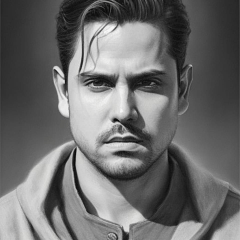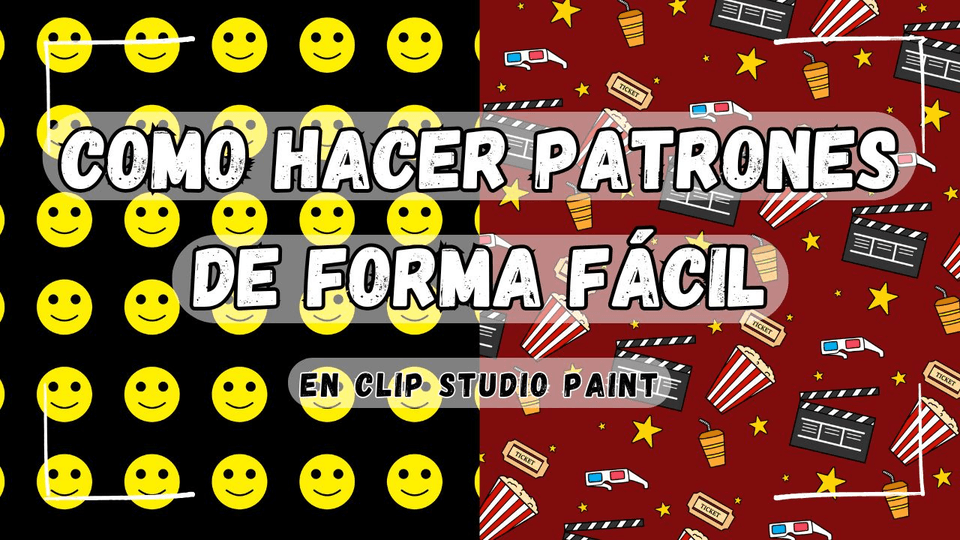Using the 360-degree Panoramic image in your work
From Clip Studio Paint Ver.1.11.6, primitives and panoramas have been added to the Material palette.
This article will introduce Panoramas.
For more about Primitives, see the following article.
(1) What is a Panorama?
A Panorama is a 360-degree background image that can be set on a 3D layer in Clip Studio Paint.

The images that can be set are photos from cameras that can take 360-degree panoramic images, and Equirectangular (equirectangular cylindrical) images that can be exported by 3D software.
(2) Importing & Setting Panoramas
● Importing Panorama materials
Drag and drop the Panorama material from the Material palette > 3D > Panorama to the canvas. You can also import it by tapping Paste Material at the bottom of the Material Palette.
● Setting a Panorama image on a 3D layer
If you are using a 3D drawing figure or 3D material, a 3D layer has already been created, so you can set the image from the Object sub tool's Tool Property palette under Panorama.
File: Select an image to set as the Panaroma from the images (clip/lip/psd/psb/tga/tif/bmp/png/jpg) on your device.
Material: Select an image for the Panorama from the Material palette.
Tap [Reload] to reload the image from the file path set to the panorama.
Delete: The image set as the Panorama will be deleted leaving a 3D layer without a background.
(3) Export 3D Layer as Panorama Image
You can export panorama images and draw directly on them or alter the colors. You can also export data on a 3D layer as a panorama image.
Note: Perspective will not be reflected in the exported image.
● Export the image set as a panorama
Tap [Tool Property] palette > [UV Map] > [Export] to save the image set as a panorama as a .clip file.
The exported .clip file will have a layer with the texture of the panorama, a background color layer, and a layer with gridlines labeled as the UV map.
● Export a 3D layer as a panorama image
Tap [Tool Property] palette > [Export as panorama image] to get a 360 panoramic image of everything on the 3D layer including 3D figures.
The exported panorama image will be centered around the camera in use and will show everything in front of it horizontally.
Note:
-The camera’s roll and vertical tilt will be reset.
- Empty areas will become transparent.
▼ This is an example of the exported image spot from the middle of the default material room, “clubroom.”
You can use the exported panorama to make small color adjustments and hand-drawn additions or you can add distortion with [Fish-eye perspective].
Specify where the camera is located and where it is facing by going to [Sub Tool Detail] palette > [Camera] category > [Camera position] and [Focal point Position].
With the [All sides view] palette (only in EX) you can more easily control where the camera is and where it is facing.
(4) Draw an Image for a Panorama
You can also set an image you drew for a panorama.
Try editing the panorama image in a .clip file after exporting it as a UV map.
The .clip file canvas size is 8K (8192 x 4320).
Panorama images that wrap around in a 360 globe will be heavily distorted on the top and bottom. Because it is difficult to know how the distortion will affect straight lines like in a room, you will want to place 3D figures and primitives to make shapes and give lines you can use as hints.
If you want to check how the panorama will appear when set as a 360 degree environment, you can create a new canvas to check and go to the [Layer] menu > create a [3D layer], then go to the [Tool Property] palette > [File] and load the .clip file.
You can tap [Reload] to keep checking how the panorama looks after you save the edited file.
(5) Using Panoramas in your work
● Using it as backgrounds for illustrations and manga
With the ability to support 360-degree angles, you can adjust the camera settings to find the right spot for your work in a 360-degree image of a room or landscape.

● Creating a panoramic stage set
You can create a stage set by placing multiple 3D materials on a 3D layer with a Panorama image as a reference. This can be used for deciding the composition of concept art and comics.

(6) Mastering Panoramas
● Displaying a larger area on the canvas
If you want to widen the image you have on your canvas or in your comic panel you can set a higher value for [Fish-eye perspective] by going to the [Tool Property] palette > [Perspective].
If you increase the value, a wider area will be filled with the image, but the image at the edges will be distorted because of the strong perspective.
● Adjust panorama eye level
By default the eye level will be set to the middle of the canvas but you can move it up and down by going using the [Move layer] tool.
● Changing the display while adjusting a Panorama
While operating the Panorama, changing Edit Display Settings at the bottom of the Tool Property palette will change the screen display. When set to Fast, the Panorama will be superimposed on the upper layer or outside the canvas. When set to Normal, the Panorama will not display outside the illustration or canvas.
Try to choose a display method that is easy to use when operating Panoramas.

● When a Panorama is rotated, the 3D material placed shifts from the anticipated position
When using the Panorama as a stage set, if the position of the placed 3D material in 3D space does not match the position on the Panorama's display, the 3D material will be displaced when the camera is turned.
Go to the [Sub Tool Detail] palette (PRO/EX) > [Camera] > and change [Camera position] and [Focal point Position] to specify where the camera will be in the 3D environment.
Set X and Z to "0", and set Y to the height of the camera eye level in centimeters (ex. 300 for 3 m, 50 for 50 cm).
If you are using a default panorama environment then you should set it to X:0, Y:130, and Z:0 and then place the 3D materials for easier placement.
(7) Registering Panoramas as materials
● Registering a single Panorama
Tap Material in Panorama in the Tool Property palette to display the Material Property window where you can set the material name and location, and register it in the Material palette.
When the Panorama launcher is displayed, you can also register Panorama materials from the rightmost icon.
● Publishing Panorama materials to Clip Studio Assets
You can publish Panoramas to Clip Studio Assets.
If the Panorama is included in a 3D layer, it will be classified as an Image Material in Clip Studio Assets advanced search. Materials registered with a Panorama separately from the 3D layer will be displayed as Panorama.
Therefore, if you register materials with separate Panorama and 3D layers, more people will have a chance to see the material. It will also make it easier for people to use materials that are Panorama only.
Separately registered materials can be published together as a collection of materials.
Also, make sure that the textures you set on the Panorama and the rights to the 3D layers do not violate the Clip Studio Assets rules. Materials that can be published on Clip Studio Assets are limited to those for which the submitting user owns the copyright or other intellectual property rights. Users must be aware of the intellectual property rights of content before posting it.
Please take a look at this article regarding how to use 3D materials.
























Comment